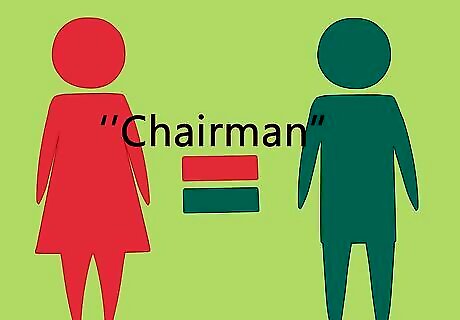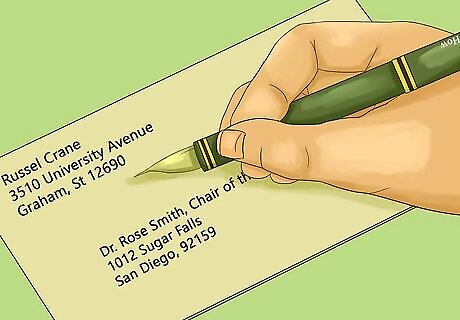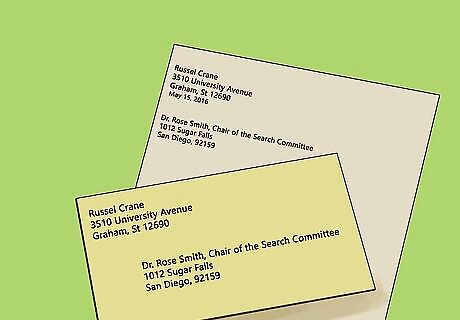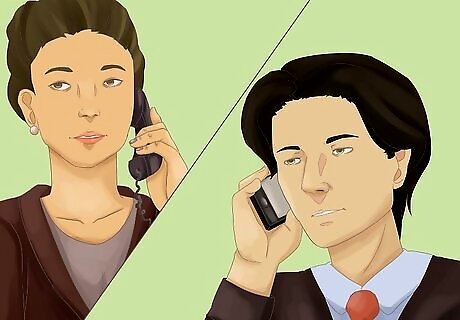
views
Using Correct Terms

Use "Madam Chair" or "Madam Chairman" to address a female chair. The term "chairwoman" can be used if there is a particular reason to make the clear distinction that a female is fulfilling the role. Check whether the woman holding the office will allow this form of address or if a gender-neutral alternative should be used instead.

Use "chair" or "chairperson" to be gender-neutral. In the United States, "chairperson" may be more accepted as a gender-neutral title than elsewhere, such as the United Kingdom. When addressing her during formal meetings, you should not use the second person. In other words, you should not say, "Madam Chair, do you think we should…?" but rather "Does the chair feel we should…?"

Address the woman by a different gender-neutral title accepted by the chaired body. Depending on the organization, a person serving as chair could be referred to as "president," "speaker," "presiding officer," "moderator," or "convener." The United States Senate, for example, uses the title "President." The U.S. House of Representatives, on the other hand, has a Speaker of the House who serves as its chair. A female Speaker may be addressed as "Madam Speaker."

Use "chairman" as a gender-neutral term. Many people feel that the term "chairman" and other terms like it are not meant to designate a gender but a role or office. As such, it can be acceptable to use that term even to refer to a woman. In fact, Robert's Rules of Order (which are considered the gold standard for business meeting etiquette) defend this use as appropriate when the organization's bylaws specify the title "Chairman" for the holder of the chair.
Addressing a Female Chair in Writing

Address the envelope appropriately. Include the woman's full name, any titles or honorifics (such as J.D. or PhD), and her full chair title. For example, you may write "Dr. Rose Smith, Chair of the Search Committee." You can also use "Rose Smith, Chairwoman." It is also permissible to use other honorifics such as Dr., Judge, or Honorable.

Use consistency in the header and body. Use the same name and title on the envelope and on the header of the letter itself. The exception is the greeting line, which can be shorter and omit lengthier titles if necessary.

Use the proper level of formality in your greeting. In a very formal business letter, always use the person's complete title in the address and greeting line. A formal letter may begin with "Dear Chair Smith," or "Dear Madam Chair." A less formal letter, email, or memo may omit the full title. You may write "Dear Dr. Smith" or "Dear Ms. Smith," but avoid "Mrs." unless you have been specifically instructed otherwise by the chair herself. When in doubt, err on the side of a more formal address. These rules are not hard and fast, since different women may have different preferences. Follow the woman's personal preference if she would rather be addressed as "Mrs." or something else.
Determining What a Specific Chair Prefers

Use the title she prefers if you know it. Some female chairs prefer to just be called "chair." Others might like chairwoman or another honorific. Some female chairs even prefer the term "chairman" and do not care about its gendered distinction. Do what you can to determine what she prefers, if at all possible. There are several ways you can try to find out her preference.

Check with colleagues. Perhaps there are other people who are more acquainted with the chair and can tell you what she prefers to be called, or alternately, what most people tend to call her. Following norms is generally a good idea to avoid sticking your foot in your mouth or saying something awkward. If there is a general consensus at the company or organization to call her Chair Smith, for example, it would be out of place for you to suddenly call her Chairwoman Smith.

Check websites and newsletters. If the chair has been in charge very long, the odds are good that she has penned a letter, article, statement, or other writing in which she may have signed her name with her title. Start with a simple internet search of her name. If you cannot find any information about her, look for information about other women who have held her position.

Ask her. If you have a sufficiently well-acquainted relationship, don't be afraid to ask her what she prefers to be called. Alternately, she may correct you when you address her; listen to what she says and follow her lead. Keep in mind that the title you use to address her may change depending on the occasion. In formal situations, for example a big board meeting, you may address her as Chairwoman Smith or Madam Chairwoman, but in other situations she may prefer to be called by her first name. However, never assume that it is ok to refer to her by a less formal name; she is your superior. Be sure that she is the one who tells you she would prefer a more intimate and less formal name, and only use it in the settings where she has clearly made it permissible.



















Comments
0 comment